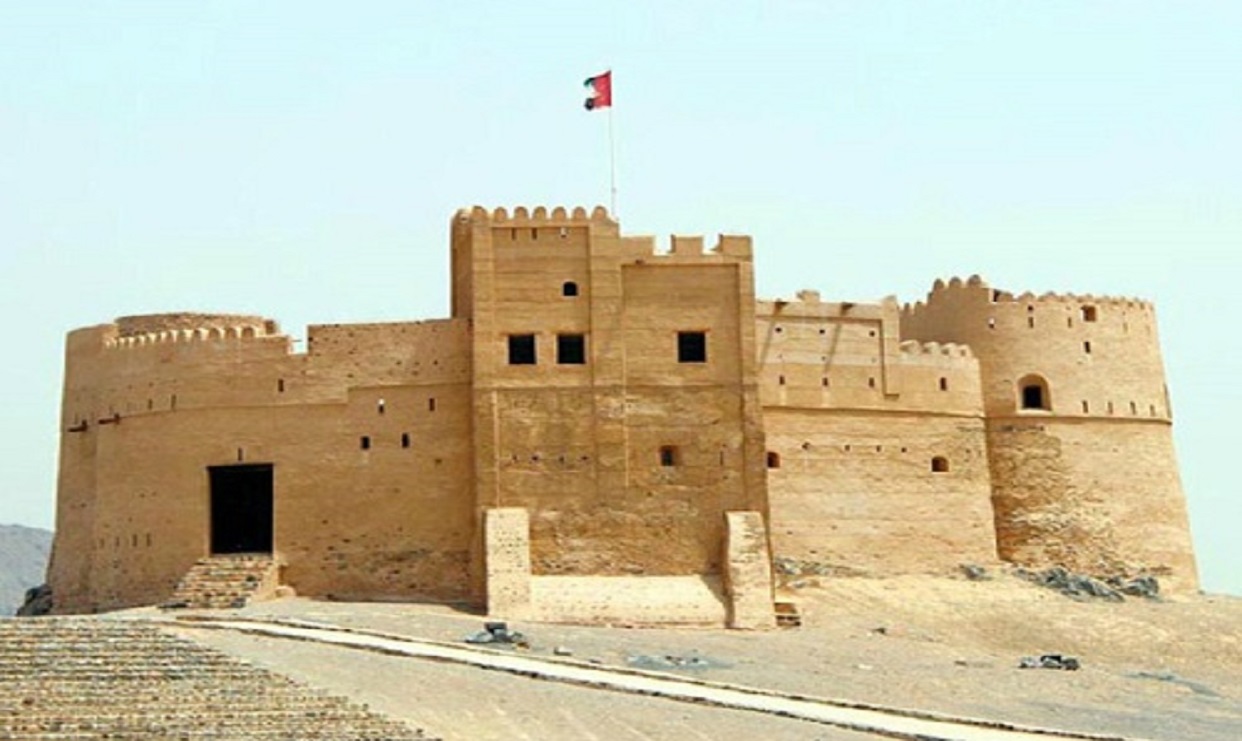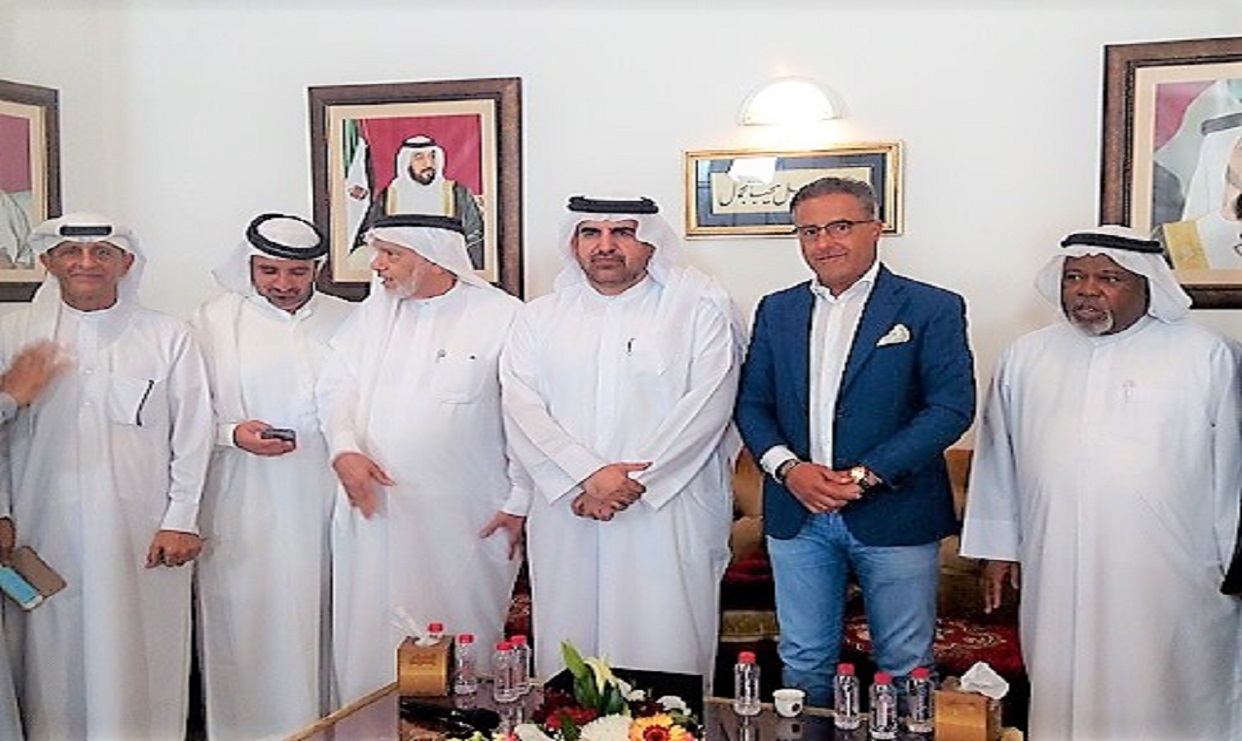3,147 عدد المشاهدات
A castle, or a fort, is a defensive system used by most peoples since ancient times that gradually evolved through the centuries until the beginning of the previous century. This construction system is a defensive trick, now forgotten and obsolete due to development, where the castles and forts are futile in front of the varied modern means of attack, especially air attack. Moreover, castles were neglected as an effective pattern for defeding the land, and peoples turned into differenet modern defense systems. Castles and forts have turned into a heritage of the past, telling stories of struggle and steadfastness against any aggressor who tried to occupy lands or conquer peoples.

In the Arabian Peninsula, Arabs built castles and forts to defend their land, honour, supplies and wealth, even if they were limited or varied from one region to another. In addition to the development of attack methods, this approach led to the development of Arabs’ defensive mentality and they developed the defense structure as needed. Arabs built a larger yard inside the fort as population increased, and sporadic towers inspired by their experience, to avoid sudden attacks and for monitoring and surveillance giving the advantage of preparing for danger before it occurs. Neighbouring countries benefited the Arabs’ experience, who also benifited from their neighbours to develop their defense system of the castle, fort or tower. Thus castles were similar in some areas and varied in others, as needed and according to the available natural materials; mountain areas were different from plains.
In this article, I would like to give a brief idea of the castles and fortresses of the Arabian Peninsula, beginning with the United Arab Emirates, specifically Fujairah. Of course, like all the countries that I wrote about, I visited and verified their stories and dates. My trip to Fujairah was to visit and then study its castles and fortresses as the beginning of a long road where I speak and describe Arab castles and fortresses.
Fujairah fortresses
Fujairah is the only Emirate that is entirely located on the Gulf of Oman. Like other Emirates, it built castles, fortresses and towers, as needed, to protect and defend the land, honour, and wealth. Fujairah Fort is the most importance, with the foremost and largest population and for being the headquarters of its rulers until recently.
I visited all Fujairah’s forts and examined their details. Then I came back once to some castles and more times to others, perhaps because I was associated with them due to mentioning an incident or a historical account. Of the six forts, Fujairah Fort was ranked first for several reasons, as I mentioned, and also because of its location in an accessible area.
Owing to this easiness, my visits were frequent; more than once and at different times. Even when I was on my way to other areas, I have never hesitated to stop, at least for half an hour, in order
to recall the stories and tales related to Fujairah Fort, such as the memoir of Portuguese Alfredo Albuquerque and linking the course of events with some areas and forts.
The most important factor in choosing a castle, tower or fort is to select the best strategic location in the area providing the visitor with a wide angle perspective of the area it mediates and overlooks. In the past, such strategic location gave forts – like Fujairah Fort, Masafi Fort, Bithnah Fort, Al Hayl Castle, Ohala Fort and Al Badiyah towers – the ability to monitor.
A castle, fort, tower, and square, are multiple descriptions of the buildings through which our ancestors gave us, in finer detail, an idea about their identity and their unique environmental and local arts. The outer shape of the fortress and its internal structure are the result of a mixture of accumulated experiences that were learned by our ancestors who taught the following generations building arts in the desert and mountain environment.
Ancestors showed great skill to bring out the building in its final shape. The landowner extracted materials from his surroundings, using stone, sand and gravel, combining them with other components, and forming a mix resistant to the factors of demolition and erosion. Dry grass residues, tree trunks, palm fronds and tree branches were also used to build and set up castles to be safe shelter against the continuous attack on our peaceful land for centuries. There is no doubt that peace has kept them away from historical conflicts, making the region absent from war scene and little mentioned in the old news.

A castle or fort has indispensable components; the well or the source of water, the most important condition of the castle or fort, which protects people against the threats: water is the main source of survival. Forts usually consist of an internal courtyard that is sufficiently large for the population, and also have a number of rooms for various purposes, including rooms used as stores for food supplies, and chambers for hosting or sleeping.
Fujairah Fort .. Fort of Al Sharqi family
It is the largest and most important building in Fujairah, and was the seat of government until the beginning of the last century. It is located in the interior, two kilometers from the coast.
It is built on a small hill that rises about twenty meters, giving it a defensive advantage, where the hill increases its total height. Radiocarbon dating has identified the date of the construction to be around 1500–1550 AD. Thus, it retains a history dating back more than five hundred years and attests to the long-standing attachment of the ancestors to their land, where they encountered many tribulations from the oppressive peoples of the East and the West. It was under attack as documented by written Portuguese notes. It once stood and suffered some destruction once and was rebuilt between 1650 and 1700 AD. During the reign of Mohammed ibn Matar al-Sharqi, who ruled between 1803 and 1808, there were some reforms and additions, especially since the ambitions were directed, entirely, towards the Gulf and the Arabian Peninsula since the beginning of the nineteenth century when the desert began to reveal its underground treasures.

Al-Bithnah Fort
A large and attractive castle with its two large towers and strong cohesive structrue. It was probably built around a large rock because the middle part is higher than the rest of the building and thus it connects the entrance directly to the top where the castle hall is located. Located approximately 13 km west of Fujairah, Al Bithnah is one of the villages overlooking Wadi Ham that extends from Fujairah to Wadi Siji across Al-Hajar Mountains range. The fort dates back to about 1735, and like other castles and forts, archaeological sites and monuments dating to the 2nd and 1st centuries BC were discovered around it. Other sites have also been discovered that denote to the Islamic era, most notably the site of the fort itself. I went to the fort and I was attracted by the outer room that was used to make molasses. To the right of the room, directly after three steps, there is the only entrance to castle, which leads to a reception room. Just behind it there is a stairway to climb up to the high fort hall, which was probably built above a rock as I mentioned earlier. The upper part of the fort is divided between the two towers, observation and defense terraces, two large chambers, and walls with dozens of embrasures that were used to observe and pass muzzles to be aimed at the attacking enemies. From the same embrasures, now you can see the view of the valley, its palms and blooming trees, which the gardens of the Al-Bithnah have enjoyed since ancient times. This was revealed by the French and Swiss foreign missions, which discovered archaeological sites in Al-Bithnah dating back to the third millennium BC.
Masafi Fort
Al Aflaj Castle, as was associated with my imagination, is the only fortress among others, whose outer wall has an old natural falaj, not a well. AL Aflaj is an ancient irrigation system especially in the Arabian Gulf, particularly in the eastern regions. It is a network of underground canals that avoid exposure to the strong desert sun, and thus, avoid rapid evaporation. The fort is also characterized by the existence of a mosque adjacent to the wall, built with the same environmental materials, and has a separate entrance to the fort from the inside. Masafi is located 30 kilometers west of one of the roads leading to Dubai. Archaeological studies estimate it to be about 500 years old, but the presence of Aflaj might make it more ancient; perhaps it was built above the ruins of an older fort.
Ohala Fort
A small fort with one tower that is considered the highest and safest place in the fort as a whole. The fort has an exterior wall distinct from the rest of the forts, in its width and the presence of embrasures for guns and observation at the opposite side of the main entrance. It is one of the forts that one can see foundations from the Iron Age in its area, and this is more than sufficient evidence that Ohala have existed for thousands of years. The place of the fort was not chosen by coincidence but it was the continuity of grandparents’ choice after their long experience to choose the optimal location of the fort so they can control the valley behind it.
Ohala refers to wet and boggy lands, where rainfall increases in the UAE areas adjacent to Oman as a whole and where most of the areas are transformed into a rainwater scene that makes it difficult to walk because of the mud resulted from mixing water with boggy ground. Ohala is about 25 km away from Fujairah, to the south, and there are two roads to reach it, the first is Fujairah-Al Hayl Road, and the other is Kalba Road.
The most important monument in this fort is the remains of the ancient foundations of a castle that was in the same place in the Stone Age, then the outer majlis, which is a complete building restored recently. The outer majlis is different from the rest of the rooms and sections of the fort in terms of precedence and that it is the only part outside the fort wall.
Al Hayl Castle
Al Hayl Castle is about 15 kilometers south-west of Fujairah in Al Hayl area within its famous valley Wadi Hayl. For me, it was one of the experiences I would recommend to those who would like to visit a place where nature is intertwined with history. The mountains isolate this place as a shell isolates its pearl.
You also see some archaeological sites that are still waiting for exploration and research to tell its story and the story of its inhabitants. The most important building in the neighborhood is the house and square of the governor, which dates back to the year 1830 AD. It consists of a courtyard surrounded by a wall and inside it there is a fortress or, so to speak, a rectangular tower that is the same shape as a fortress. This fortress is on the top of the hill and has a group of rooms that were used for family housing and some acts of governance.

Al Badiyah towers and Mosque
Towers, like castles and forts, are historical buildings bequeathed by grandfathers. In the first place, they differ from castles and forts in that they were built outside the residential area, and their most important role is warning. Also, they are not as large as castles and fortresses, but perhaps as big as a tower of a fortress or castle, and they vary in their overall defense duties.
Towers usually consist of one cahamber at different levels according to the height, with a ladder connecting the rooms together. The roof is the most important part through which all movements within sight are monitored and therefore precautions are taken according to the interpretation of the movements seen from a distance. At the time of danger they used to make warning sounds, and after the invention of gunpowder they replaced the sounds with shots of guns or a small cannon that give a message according to their number. Also, fire in ancient times gave the same messages according to the interpretation of the shape of the fire and its smoke emanating from one of the towers.

Seven kilometres north of Khor Fakkan lies a historic village, with its archaeological sites covering large periods of history. Its most important and famous location is Al Badiyah Mosque, which until this year holds the banner of the oldest mosques in the country. However, another discovery on the land of the UAE, specifically the city of Al Ain, revealed the foundations of a mosque much older than Al Badiyah Mosque. According to scholars, this mosque dates back to Abbasid reign; more than a thousand years as a preliminary date, while Al Badiyah Mosque dates back to five centuries at the latest.
The mosque in addition to two towers only remained from a number of towers that were guarding and watching the eastern shore on one hand and the valleys of the mountains on the other. Over the stone hill, which was used even during the stone ages, you can clearly see the remains of the settlements of these ages a few meters behind the two towers. These towers were built like the rest of the defence buildings in the entire Eastern region from the available resources of nature. The stone gives towers the advantage of hardness unlike other fragile materials, thus it held up and did its part. Some of these buildings remained to tell us some of the stories of the struggle of defending the land, and to tell the future generations to be faithful to the nation’s trust.





